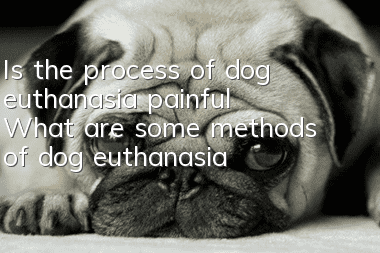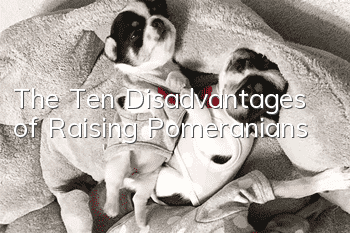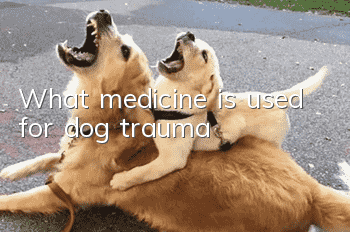Is the process of dog euthanasia painful? What are some methods of dog euthanasia?

What is euthanasia
The word euthanasia comes from the Greek word "eu", which means "peaceful and meaningful death". A peaceful death means minimal pain and distress. Euthanasia in experimental animal science refers to the humane death of experimental animals. Because experimental animals are used as human substitutes in various scientific experiments, humans are obliged to give enough respect to experimental animals and minimize the pain and suffering of animals when executing them.
Euthanasia technology is difficult to achieve completely without pain and suffering, but by improving the environmental conditions for euthanasia and mastering the technology proficiently, the suffering of animals can be reduced. It can be seen from the definition that euthanasia technology contains two aspects, one is to reduce pain, and the other is to relieve pain. Reducing pain requires establishing painless death techniques, and reducing pain requires minimizing animal perception (loss of consciousness).
Detailed explanation of dog euthanasia treatment methods
Drug methods
The principles of drug euthanasia techniques include: direct or indirect hypoxia, neuronal inhibition of life functions, and brain activity or life Direct destruction of functional neurons.
Direct or indirect hypoxia.
Can be done anywhere, and can cause the animal to lose consciousness at different rates. Death without pain and suffering must occur when the loss of consciousness precedes the disappearance of movements (disappearance of muscle activity), and the disappearance of movements does not mean loss of consciousness and the absence of pain. Therefore, euthanasia drugs that cause muscle paralysis without causing loss of consciousness (such as depolarizing or non-depolarizing muscle relaxants, strychnine, nicotine, magnesium salts, etc.) cannot be used as a single method of euthanasia.
Neuronal inhibition of vital functions
The drug first inhibits brain neurons and then causes the death of the animal. Certain drugs can put animals in a so-called agitated manic phase during administration, and they may make noises or muscle contractions. But this was not purposeful. Death occurred immediately with loss of consciousness. The reason was that the heart stopped beating and the respiratory center lacked oxygen supply. Direct destruction of brain activity or vital function neurons comes from direct impact to the brain and depolarization of brain neurons can cause animals to lose consciousness immediately. Death comes from the disappearance of the midbrain-controlled heart and respiratory centers. Sometimes, animals can be seen violently The muscles move, but the animal no longer feels pain and suffering.
1. Inhaled drugs:
Any inhaled drug needs to reach a certain concentration in the alveoli to cause death, so it takes a certain amount of time for the animal to die. The principle of drug selection depends on whether the animal feels pain and suffering between the time it starts inhaling the drug and death. Pay attention to this method.
(1) Drugs that can reach higher concentrations quickly, make animals lose consciousness relatively quickly, and are more humane are used for euthanasia;
(2) The equipment can quickly reach a high concentration of the drug and maintain it for a certain period of time without leakage;
(3) Most drugs are harmful to humans, such as anesthesia danger (**), coma (halothane), and hypoxia (nitrogen and carbon monoxide)
(4) When slow alveolar ventilation easily causes animals to become agitated, non-inhalation methods should be used to euthanize the animals;
(5) Newborn animals are highly tolerant to hypoxia, so it is not appropriate to use inhalation to euthanize them;
(6) High-speed airflow can easily produce noise and scare animals;
(7) Only one kind of animal can be placed in a box;
(8) Reptiles, amphibians, diving birds and diving mammals cannot be euthanized by inhalation
2. Non-inhaled drugs
Injection of drugs is a faster and more reliable method of euthanasia. If it does not cause fear and pain to the animal, it is recommended to use drug injection to euthanize. However, animal restraint and restraint will add additional fear and uneasiness to the animal. If necessary, sedation and anesthesia will be used to assist in euthanasia. It is best to euthanize aggressive, fearful, or ferocious animals with sedation followed by intravenous euthanasia medication.
When intravenous injection of euthanasia drugs is difficult, intraperitoneal injection of non-irritating drugs (non-blocking neuromuscular drugs) is also possible, but due to
Since it requires Phase 1 and Phase 2 anesthesia to die, the animal needs to be placed in a smaller, quiet box to avoid stimulation and trauma. Intracardiac injections can also be performed in animals that are deeply sedated, anesthetized or asleep. Non-intravenous injection methods such as intramuscular injection, intrathoracic injection, subcutaneous injection, intrapulmonary injection, intrahepatic injection, intrasplenic injection, intrarenal injection, and intrathecal injection cannot be used to perform drug euthanasia.
3. Physical methods
Physical euthanasia methods include spine stabbing, shooting, cervical vertebra dislocation, decapitation, electric shock, microwave stimulation, execution trap, chest compression, and bloodletting.
Euthanasia performed by skilled personnel using good equipment is better than other euthanasia methods. The animals hardly feel fear and anxiety because it is fast and the animals will not feel pain.
Bloodletting, stunning and cerebral spinal puncture cannot be used as a single method and can be used as a supplement to other euthanasia methods.
Some people think that physical methods of euthanasia do not conform to the aesthetic point of view, but the aesthetic point of view and humanity are always opposed. In some cases, physical methods are the most appropriate euthanasia method because it can avoid or shorten the unnecessary pain and pain the animal endures before death.Painful, but requires that euthanasia be performed by personnel who are well-trained and have an aesthetic perspective. Because all physical methods are traumatic and potentially dangerous to both animals and people, operational proficiency is crucial.
4. Auxiliary methods
Stunning and cerebrospinal puncture, when used appropriately, can cause animals to lose consciousness but cannot guarantee death. They are often used as auxiliary methods of euthanasia, and are used in conjunction with euthanasia methods such as drugs and bloodletting.
The above is how to euthanize a dog. As for how to euthanize a dog, if you want to euthanize your dog, if you are not completely sure, the editor recommends not to do it privately. If you are not careful, it will cause more serious problems to the dog. In Shanghai, go to a professional hospital to get insurance.- Essential tools for dog bathing
- Daily care for Dalmatian nails
- How to do toilet and urination training for dogs?
- Three things to pay attention to when choosing clothes for your dog
- Puppy deworming and vaccination sequence
- How to train a dog not to eat randomly? Dogs are prohibited from picking up food anywhere!
- Introduction to symptoms of early pregnancy in Chihuahuas
- How to treat lactation in female dogs after giving birth?
- What should I do if my dog poops and urinates indiscriminately? Correct the dog’s pooping and urinating behavior!
- Why do Samoyed dogs vomit? These are the reasons why Samoyed dogs vomit!



